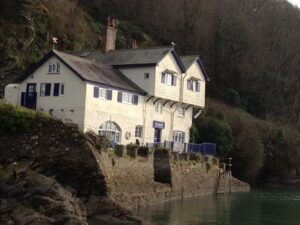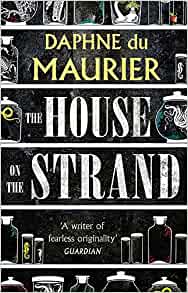 I’ve been reflecting lately on which books stand out most to me, from childhood through to the present day, and a pattern has emerged: my all-time favourite reads at any particular time of my life had a strong sense of place.
I’ve been reflecting lately on which books stand out most to me, from childhood through to the present day, and a pattern has emerged: my all-time favourite reads at any particular time of my life had a strong sense of place.
From Enid Blyton’s boarding school stories, through my teenage passion for the Brontës’ wild Yorkshire moorlands, it’s clear I was hooked on places from an early age. Onward I went into Jilly Cooper’s Rutshire, Harry Potter’s Hogwarts and Tolkien’s Middle Earth, always captivated by a good setting.
Alongside my fellow Sister Scribes friends, Kitty Wilson and Jane Cable, I have a deeply-rooted love of Cornwall, and whilst writing a recent novel, I thought back to when this fascination with the county began and realised it stemmed from my interest in a writer and her Cornwall-based stories: Daphne du Maurier.
 It was the 1990s, and every autumn, my husband and I would spend a week on the south-east Cornish coast—days of kicking our way through crisp golden leaves, inhaling the smell of wood smoke from cottage chimneys, and watching the gulls wheel across steel-grey skies as waves lashed the rocky shoreline.
It was the 1990s, and every autumn, my husband and I would spend a week on the south-east Cornish coast—days of kicking our way through crisp golden leaves, inhaling the smell of wood smoke from cottage chimneys, and watching the gulls wheel across steel-grey skies as waves lashed the rocky shoreline.
One of our favourite walks was the Hall Walk, which has stunning views across the charming town of Fowey and out towards Gribbin Head as you meander towards Pont Creek, onwards to Pont Pill and then back along the other side of the creek to Polruan.
During these holidays, I discovered Daphne du Maurier’s strong connection to the area, where she lived for many years, but at the time I had only read her most famous novel, Rebecca. I became fascinated with her life, devoured her biography and began to read her other works, beginning with the first full-length novel, The Loving Spirit.
Daphne often walked the Hall Walk from her then home at Ferryside, adjacent to the Bodinnick Ferry where it docked after crossing the river from Fowey. It was on this walk, at Pont Creek, that she came across a derelict schooner, the Jane Slade. Although the ship was rotting, the figurehead remained intact, and she became spellbound by the ship, not only often climbing aboard and imagining its past adventures, but also going on to make local enquiries into the vessel and the local family who had built her.
 She absorbed the history of the boat-building Slades, sought out the family tombstone in the churchyard at Lanteglos, up above Polruan (the church where Jane Slade had been married and where Daphne herself went on to marry), and was also given access to some family letters.
She absorbed the history of the boat-building Slades, sought out the family tombstone in the churchyard at Lanteglos, up above Polruan (the church where Jane Slade had been married and where Daphne herself went on to marry), and was also given access to some family letters.
Bewitched by all she was discovering and inspired by her surroundings, Daphne realised she had enough material for a novel, a book she wanted to write ‘in which atmosphere and a sense of place would dominate’.
The Loving Spirit (the title came from a poem by Emily Brontë) was published in 1931— with the Slade family becoming the Coombes and Polruan renamed as Plyn—and is still in print today.
The figurehead from the Jane Slade was given to Daphne, and it was mounted on a beam below her bedroom window at Ferryside, where it still hangs.
My love affair with Cornwall is as strong as ever, and I’m looking forward to when I can visit again, walking those beloved paths, taking in the breath-taking views and inhaling the atmosphere of the place my heart calls home.
Sources: Daphne du Maurier – Margaret Forster (1993), Vanishing Cornwall – Daphne du Maurier (1967)



